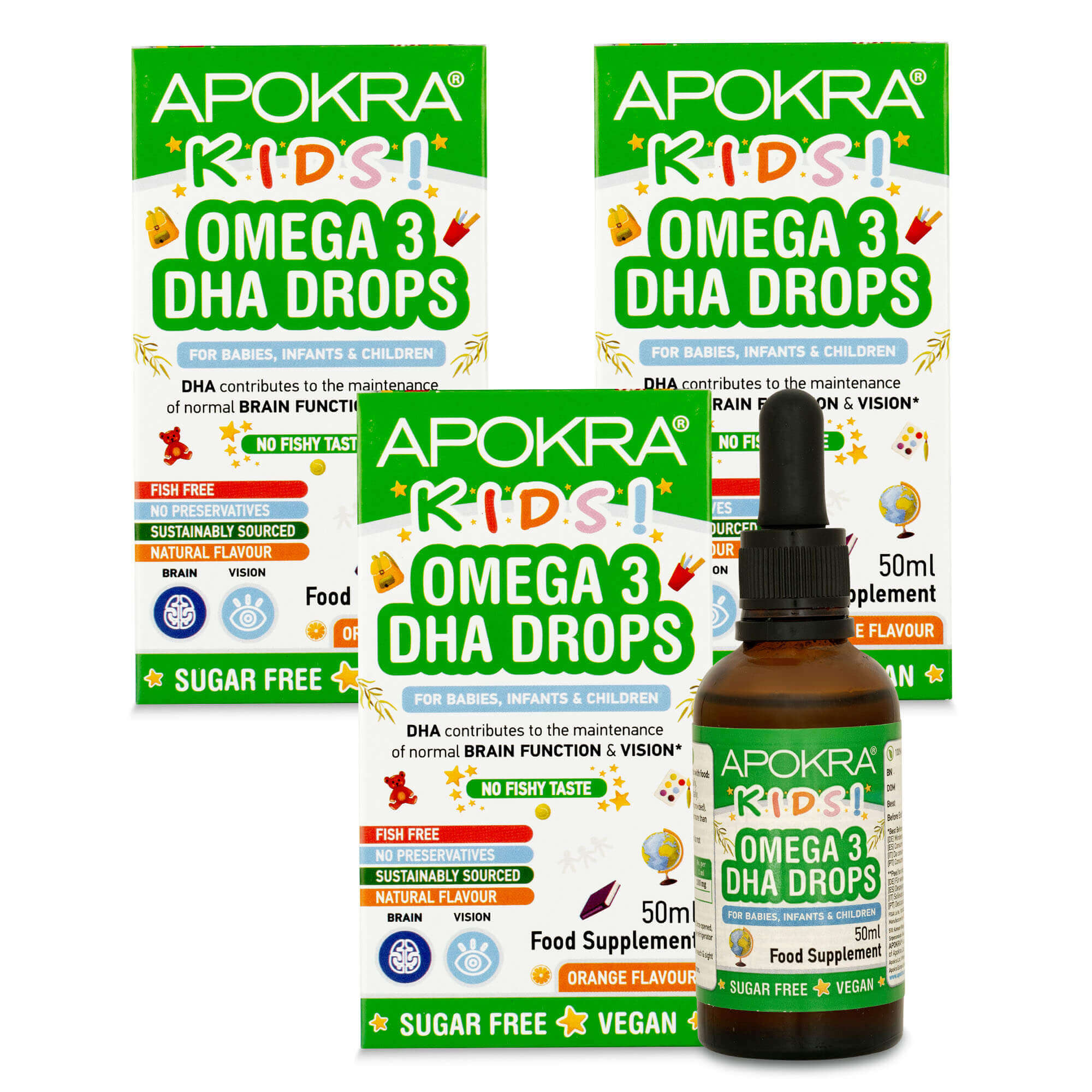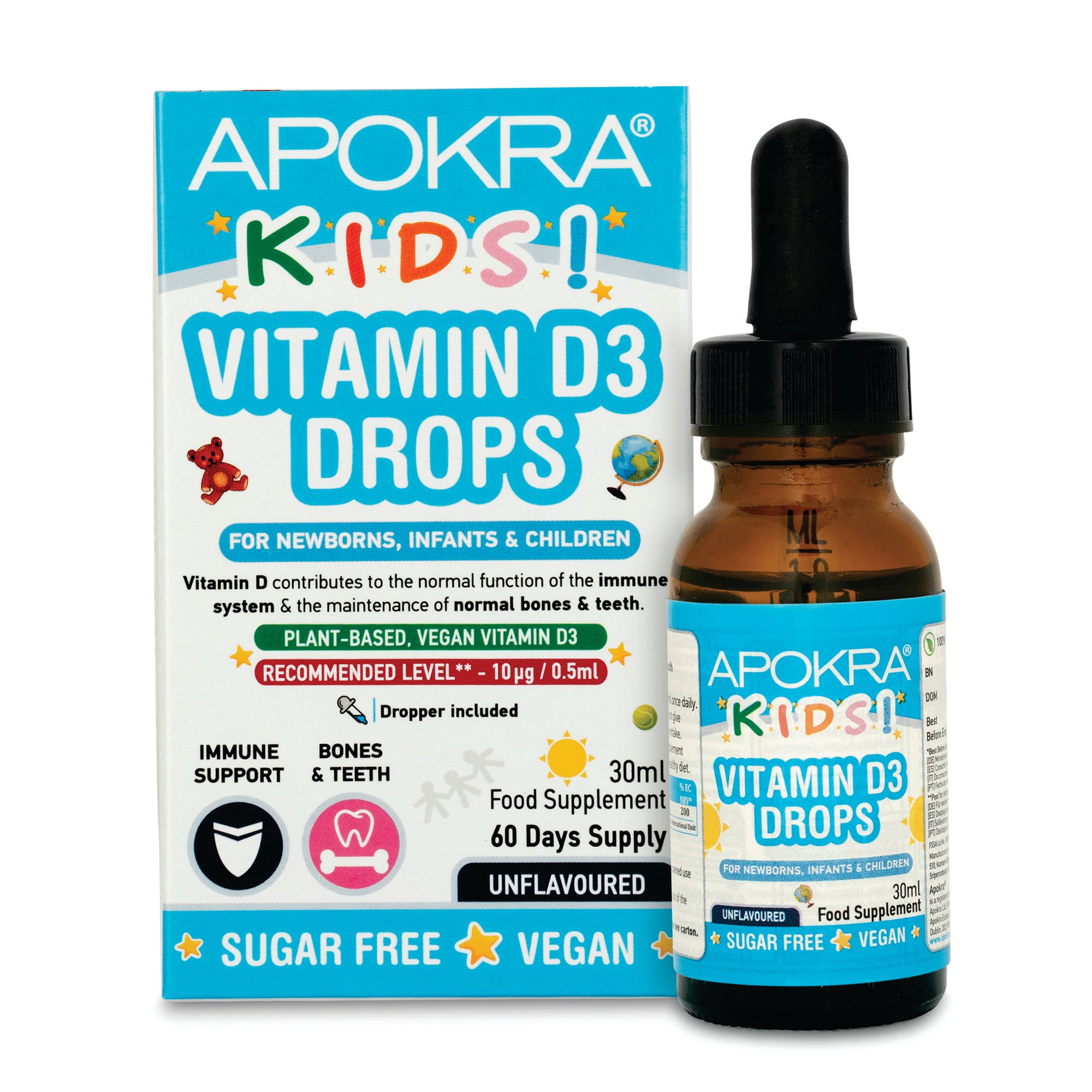The Benefits of Omega-3 for Kids

Introduction
Importance of Optimal Health for Children
As a parent, you strive to provide the best possible care for your child, and their health is at the top of your priority list. Optimal health plays a crucial role in their growth, development, and overall well-being. One key factor that significantly contributes to a child's health is their nutrition. By understanding the importance of incorporating essential nutrients into their diet, you can help set the foundation for a healthy and vibrant future.
Introduction to Omega-3 Fatty Acids and Their Benefits
Among the essential nutrients, omega-3 fatty acids have gained considerable attention due to their numerous health benefits. Omega-3s are a group of polyunsaturated fats that are vital for the proper functioning of the human body. While the body can produce some fats on its own, omega-3s are not naturally synthesised, making it essential to obtain them from external sources like food and supplements.
Omega-3 fatty acids are particularly beneficial for children as they support various aspects of their health, including brain development, vision, heart health, and immune system function. Incorporating omega-3 into your child's diet can have a significant impact on their overall well-being and may contribute to improved cognitive abilities, enhanced eye health, and a reduced risk of chronic diseases.
In the following sections, we will delve deeper into the world of omega-3 for kids, exploring its different types, sources, and the incredible benefits it offers. Additionally, we will provide practical tips on how to incorporate omega-3 into your child's daily routine, ensuring they receive the necessary nutrients for optimal growth and development. Let's dive in!
What is Omega-3?
Explanation of Omega-3 Fatty Acids
Omega-3 fatty acids are a type of essential fats that are crucial for the normal functioning of the human body. They are classified as polyunsaturated fats, which means they have multiple double bonds in their chemical structure. These fats are considered essential because our bodies cannot produce them naturally and therefore must be obtained from dietary sources.
Types of Omega-3 (ALA, EPA, DHA)
There are three main types of omega-3 fatty acids: alpha-linolenic acid (ALA), eicosapentaenoic acid (EPA), and docosahexaenoic acid (DHA). Each type has its own unique benefits and functions within the body.
Alpha-Linolenic Acid (ALA): ALA is the most common type of omega-3 found in plant-based sources such as flaxseeds, chia seeds, and walnuts. While ALA is beneficial, it's important to note that the body has limited ability to convert ALA into EPA and DHA, which are the more biologically active forms of omega-3.
Eicosapentaenoic Acid (EPA): EPA is primarily found in fatty fish like salmon, mackerel, and sardines. It is known for its anti-inflammatory properties and plays a vital role in supporting heart health, reducing inflammation, and promoting overall well-being.
Docosahexaenoic Acid (DHA): DHA is also predominantly found in fatty fish. It is a major component of the brain and eyes, playing a critical role in brain development, cognitive function, and maintaining optimal vision. DHA is particularly important for children as their brains and eyes are still developing.
In the next section, we will explore the specific benefits of omega-3 for kids, shedding light on how these essential fatty acids can positively impact their growth and overall health.
Sources of Omega-3 (ALA, EPA, DHA)
Omega-3 fatty acids can be obtained from various dietary sources. Plant-based sources such as flaxseeds, chia seeds, and walnuts are rich in ALA. Fatty fish like salmon, mackerel, and sardines are excellent sources of EPA and DHA. Additionally, omega-3 supplements derived from fish oil or algae are available for those who may have dietary restrictions or prefer alternative options. Including a variety of these sources in your child's diet can ensure an adequate intake of omega-3 fatty acids for their overall health and well-being.
Benefits of Omega-3 for Kids
Omega-3 fatty acids offer a wide range of benefits for children, supporting their growth, development, and overall health. Let's explore some of the key advantages:
Brain Development and Cognitive Functions
Omega-3 fatty acids, particularly DHA, play a crucial role in brain development and function. The brain undergoes rapid growth and maturation during early childhood, and DHA is a major structural component of brain tissue. Adequate intake of omega-3 during this critical period can support cognitive functions such as memory, attention, and problem-solving skills. Research suggests that children with higher levels of DHA in their diet may have improved learning abilities and academic performance.
Visual Health and Eye Development
DHA is also essential for maintaining healthy vision in children. It is a major component of the retina, the part of the eye responsible for transmitting visual information to the brain. Adequate levels of DHA during eye development can contribute to optimal visual acuity and may reduce the risk of vision problems later in life. Including omega-3-rich foods in your child's diet can promote healthy eye development and support their visual health.
Heart Health and Cardiovascular Benefits
Omega-3 fatty acids have been extensively studied for their positive effects on heart health, and these benefits extend to children as well. Research suggests that omega-3 can help regulate blood pressure, improve blood vessel function, and reduce triglyceride levels in children. By incorporating omega-3 into your child's diet, you can contribute to their cardiovascular well-being and potentially reduce the risk of heart disease in the long run.
Immune System Support and Reducing Inflammation
A healthy immune system is essential for protecting children from infections and illnesses. Omega-3 fatty acids have been found to have anti-inflammatory properties, helping to modulate the immune response and reduce the risk of chronic inflammation. By supporting a healthy immune system, omega-3 can enhance your child's defense against infections and promote overall well-being.
In the next section, we will explore the best dietary sources of omega-3 for kids, providing you with practical options to incorporate these essential fatty acids into your child's diet.
Best Dietary Sources of Omega-3 for Kids
Ensuring your child receives an adequate amount of omega-3 fatty acids is essential for their overall health and well-being. Here are some of the best dietary sources of omega-3 for kids:
- Fatty Fish: Incorporate fatty fish such as salmon, mackerel, tuna, and sardines into your child's diet. These fish are rich in EPA and DHA, the essential omega-3 fatty acids that support brain development and cardiovascular health.
- Chia Seeds: Boost your child's omega-3 intake with chia seeds. These tiny seeds are packed with alpha-linolenic acid (ALA), a plant-based omega-3 fatty acid. Sprinkle chia seeds onto yogurt, blend them into smoothies, or use them as an egg substitute in baking.
- Flaxseeds: Ground flaxseeds are another excellent source of omega-3. They provide ALA, which can be converted by the body into EPA and DHA, albeit at a limited rate. Add ground flaxseeds to oatmeal, cereals, or incorporate them into baked goods for a nutty and nutritious boost.
- Walnuts: Enjoy a handful of walnuts as a healthy snack that provides omega-3 fatty acids. Walnuts are a good source of ALA and can be eaten as is or added to salads, trail mixes, or homemade granola bars.
- Omega-3 Supplements: In consultation with a healthcare professional, consider omega-3 supplements specifically formulated for children. Supplements can be a useful option to ensure your child meets their omega-3 requirements, especially if dietary sources are limited or restricted.
Incorporating these omega-3-rich foods into your child's diet can help ensure they receive an adequate intake of these essential fatty acids. However, it's important to note that omega-3 supplements should only be given to children under the guidance of a healthcare professional. By including these dietary sources, you can provide your child with the necessary nutrients for optimal growth, development, and overall health.
Recommended Omega-3 Intake for Kids
Consider the following recommended omega-3 intake for kids as per the European Food Standards Agency (EFSA):
- 3 months to 2 years: Aim for approximately 100mg DHA per day, which can be achieved through a balanced diet including omega-3-rich foods.
- 2 years to 12 years: 250mg of DHA daily
Remember that these recommendations are general guidelines and may vary depending on individual needs and health conditions. It is recommended to consult with a healthcare professional or registered dietitian to determine personalized omega-3 intake recommendations for your child.
By being mindful of the recommended omega-3 intake for your child's age, you can support their growth, development, and overall health.
Tips for Incorporating Omega-3 into Your Child's Diet
Incorporating omega-3 into your child's diet doesn't have to be a challenging task. Here are some practical tips to help you ensure they receive an adequate intake of this essential nutrient:
Serve Fish at Least Twice a Week
Make it a habit to include fatty fish in your family's meal plan at least twice a week. Grilled salmon, tuna sandwiches, or sardine pasta can be delicious and nutritious options. Experiment with different recipes to find the ones that your child enjoys the most.
Add Chia or Flaxseeds to Recipes
Boost your child's omega-3 intake by incorporating chia or flaxseeds into their meals and snacks. Sprinkle these seeds onto yogurt, cereals, or salads. You can also mix them into smoothies, pancake batter, or even use them as an egg substitute in baking recipes.
Make Homemade Fish Sticks
Instead of relying on store-bought fish sticks, consider making your own at home. Use fresh fish fillets, coat them in whole-grain breadcrumbs, and bake them in the oven for a healthier alternative. Serve with a side of colourful veggies or a homemade dipping sauce for a complete and nutritious meal.
Sneak Omega-3 into Smoothies
Blend chia seeds or a high-quality omega-3 supplement into delicious smoothies that your child will love. Combine fruits, yogurt, a handful of spinach, and a tablespoon of chia seeds or an appropriate amount of omega-3 supplement. This way, you can provide a nutrient-packed beverage that supports your child's health.
Remember to consider your child's preferences and dietary restrictions when incorporating omega-3 into their diet. By being creative and finding enjoyable ways to include these nutritious sources, you can ensure that your child receives the necessary omega-3 fatty acids for their growth and development.
In conclusion, by following these tips and incorporating omega-3-rich foods into your child's diet, you can provide them with the essential nutrients needed to support brain development, vision, heart health, and immune system function. Establishing healthy eating habits from a young age sets the foundation for a lifetime of well-being.
Conclusion
Incorporating omega-3 into your child's diet can have significant benefits for their growth, development, and overall health. By providing them with these essential fatty acids, you are supporting their brain function, vision, heart health, and immune system. Here's a recap of what we've covered in this comprehensive guide:
Omega-3 fatty acids, including EPA, DHA, and ALA, are vital for the body's proper functioning. While EPA and DHA are primarily found in fatty fish, ALA can be obtained from plant-based sources such as chia seeds, flaxseeds, and walnuts. Each type of omega-3 offers unique benefits and contributes to different aspects of your child's health.
By including omega-3-rich foods in your child's diet, such as fatty fish, chia seeds, flaxseeds, and walnuts, you can ensure they receive an adequate intake of these essential nutrients. Aim to serve fish at least twice a week, add chia or flaxseeds to recipes, make homemade fish sticks, and sneak omega-3 into smoothies for a variety of enjoyable options.
It is important to consider the recommended omega-3 intake based on your child's age, ensuring they meet their specific needs for optimal health. Consult with a healthcare professional or registered dietitian for personalised recommendations.
Remember, establishing healthy eating habits from an early age sets the stage for lifelong well-being. By prioritising omega-3 in your child's diet, you are giving them the best chance for healthy growth, development, and a strong foundation for a healthy future. Learn about omega 3 deficiency symptoms.
Incorporating omega-3 into your child's diet may require some creativity and planning, but the long-term benefits are worth it. By making conscious choices and being mindful of their nutritional needs, you are equipping your child with the necessary nutrients to thrive. Start implementing these tips today and make omega-3 a regular part of your child's diet for a healthier and brighter future.






Comments
Leave a comment
Your Email Address Will Not Be Published. Required Fields Are Marked *